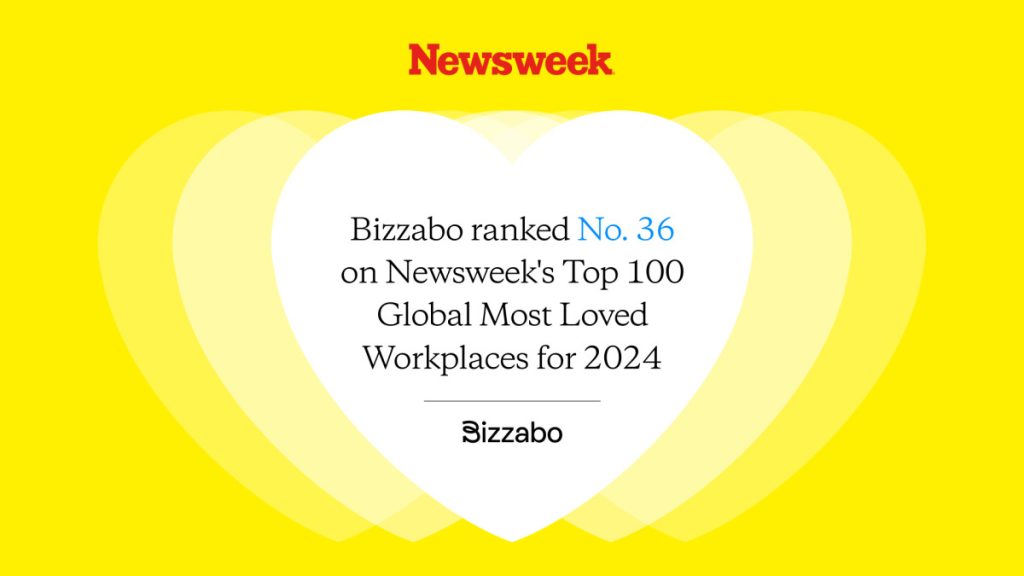Hybrid: The Guide to In-person Events With a Virtual Audience


In-person and hybrid events have increased twofold over the last three months compared to the three months prior, according to Bizzabo data. According to the 2022 Event Strategy Insights & Benchmarks Survey, 49% of organizations plan to increase the number of hybrid in-person/virtual sessions they host over the next two to three years.
That number ticks up to 52% for organizations with company-wide event strategies.
Keep reading to learn more about why organizations are increasingly embracing in-person events with an option to attend virtually, as well as popular hybrid event myths, how to create a successful hybrid event, and what to look for in a technology partner that can help you take these events to the next level.
4 Benefits of Hosting an In-person Event With a Virtual Audience
There’s a reason more and more organizations are embracing hybrid events: The benefits outweigh the challenges.
1. You can reach more people.
If you’re hosting an in-person event in New York City, some folks might fly in from San Francisco, and you might even get attendees from across the pond. But for the most part, attendees will trek in from around the tristate area.
But by incorporating a virtual element into your in-person event, you open up the experience to everyone in the world, which extends your reach substantially. In fact, 42% of virtual attendees would attend online again because it’s their best option, according to Bizzabo research.
You also make your event more accessible to individuals with diverse abilities, opportunities, backgrounds, and socioeconomic standing. Want to deliver more diverse and accessible events? Read “7 Ways To Ensure Your Event Champions Diversity and Inclusion.”

2. You lessen your impact on the environment.
According to MeetGreen, 70% of an event’s footprint comes from attendees, speakers, and sponsors flying to the venue. So, when you host an in-person event with virtual attendees, you offset a significant chunk of the environmental impact of everyone attended in the flesh.
You won’t have the volume of printed materials, food waste, and other physical waste, either. And if you’re thinking about sending swag boxes to virtual attendees, we recommend offering virtual swag like NFTs instead. After all, how many more pairs of socks or notebooks do attendees really need?
In this light, hybrid events can play a critical role in your company’s commitment to a sustainable event strategy and building a meaningful corporate social responsibility (CSR) policy.
3. You increase event ROI.
Because hybrid events enable you to reach more people and are easier to scale, they deliver better event ROI. Not only will sponsors get more eyeballs on their content, your company will also benefit from registrations from folks who couldn’t attend in person.
You can also reduce venue size, staff numbers, and travel costs to drive even greater ROI by keeping the in-person element of your event as small as possible while encouraging the bulk of your attendees to participate virtually. Yes, you’ll need virtual support staff and technical pros to ensure zero-latency streaming, but even your support staff can be remote — cutting costs even further.
4. You collect valuable data.
Although you can collect powerful data at in-person events, the virtual element of hybrid events enables you to collect data on a much more granular level. With the right event tech partner in place, event professionals can easily determine, at a glance, the following:
- How many people registered for sessions
- Check-ins
- Mobile app usage
- Gross revenue
- What attendees thought of particular sessions
And all of that data is accessible via an intuitive, centralized dashboard. As a result, you can determine how your event is going in the moment and make adjustments on the fly. You can also use the data to ensure your next event is even better.
Debunked: 3 Hybrid Events Myths
Although the benefits speak for themselves, in-person events with a virtual component are a fairly new event format. As such, there are many pervasive myths about what it means to orchestrate a hybrid event. In this section, we’ll debunk some of the more popular ones.
Myth #1: You have to plan two events.
It’s true that hybrid events have two different audiences, you’re still only planning a single event — you’re just offering different experiences to each audience. As you begin planning a hybrid event, it’s critical to keep both of these audiences top of mind and create content that appeals to and engages all attendees on a platform or venue that works for that audience.
In fact, thinking about a hybrid event as two separate events does a disservice to your participants. Attendees want to be able to interact, network, and connect with each other throughout the event. Speakers and sponsors, too, want equal opportunities to engage with participants.
Myth #2: Sponsors aren’t interested in hybrid events.
Some folks might think sponsors are more likely to finance events that occur entirely in person, but they’d be wrong. According to a study from AIM Group International, 72% of organizations are interested in hybrid event sponsorships. Additionally, Bizzabo research found that 50.6% of respondents believe that tools to connect sponsors and attendees both virtually and in-person will play a key role in their event strategy.
Hybrid events allow sponsors to reach many more people than they can at in-person events. In fact, if you offer sponsors the opportunity to reach out to attendees as part of your post-event, on-demand campaigns, their reach grows even further.
Myth #3: You can’t engage virtual attendees during hybrid events.
Engaging attendees at in-person events might feel easy, but that’s probably because events were always in-person and that’s what you know and are used to. But that doesn’t mean it’s hard to engage virtual attendees.
Event professionals are some of the most creative, innovative people in the world, which means they’re poised to deliver equitable, high-impact experiences for both audiences. Events like #PrideSummit and INBOUND do a great job of keeping both virtual and in-person audiences engaged throughout their events by offering meaningful content, memorable experiences, and the ability to attend from anywhere.
If you want to ensure virtual attendees stay engaged throughout your hybrid event, consider adding satellite events to the mix to allow folks to meet with other like-minded individuals in person. While you’re at it, consider investing in event tech specifically designed to deliver powerful, engaging experiences to virtual attendees. With virtual reactions, applause, polling, Q&A, 1:1 messaging, and AI-driven networking, you’ll be able to connect participants from the trade show floor in Tampa to the She Shed in Sheboygan.
5 Tips for Planning an In-person Event with a Virtual Audience
Are you ready to start planning your next hybrid event? Here are some tips to keep in mind to increase the chances it’s a wild success.
1. Determine your hybrid event model.
Which hybrid event model will your event follow? Choosing the right hybrid model will depend on your event’s goal, content, and audience.
For example, you might choose to plan a hub-and-spoke event, where speakers are together in a studio and attendees participate virtually or a VIP event with a live studio audience and additional participants tuning in from home live.
2. Promote your event on social media.
Because your hybrid event is open to people all over the world, be sure to promote the experience consistently across social channels to boost registrations. As the event approaches, don’t forget to push out reminders and last-chance posts too.
We recommend getting any high-profile speakers involved on social as well by having them record a quick clip to share to Instagram Reels or LinkedIn about why people should register and attend.
3. Provide opportunities for engagement.
As you begin putting together a schedule for your event, remember to set aside dedicated time for networking opportunities and brain breaks. You’ll also want to ensure sessions feature Q&A, polling, and gamification to keep your audiences engaged with each other and your speakers. With powerful event tech at your disposal, these opportunities are a cinch to execute.
4. Build strong experiences for all attendees.
Some event professionals might be so focused on people attending the event in person that they overlook virtual participants. To make the most out of your hybrid event, you need to build an agenda and create content that appeals to both audiences.
Personalization can go a strong way for achieving strong event experiences. You can build tracks tailormade for each audience or tracks that encourage audiences to commingle. For example, you can have virtual speakers who are streamed to your in-person and virtual audiences or a virtual meditation specialist leading a brain break for all participants in a breakout room.
5. Invest in purpose-built event technology.
Livestreaming your in-person event on legacy software built in the dark ages of event tech won’t create an unforgettable experience for virtual attendees. By investing in purpose-built event technology, you can seamlessly blend physical and digital experiences, redefining what’s possible with hybrid events.
Finding the Ideal Event Tech Partner for Your Hybrid Event
As you begin looking for an event tech solution to power your next hybrid event, here are some considerations to keep top of mind:
- Look for a platform that enables virtual and in-person attendees to connect with one another (e.g., networking and AI-driven 1:1 meetings).
- Choose a partner that sees the future of the market, listens and responds to customer needs, and innovates quickly and continuously.
- Think about event software as a key component of your martech stack — because that’s exactly what it is!
- Find a partner that offers self-service and completely customizable options so you can choose the relationship that works best for your organization.
Not sure where to start but want to plan a hybrid event? Give your in-person and virtual audiences the best experiences possible by using our free Hybrid Event Production Kit to plan your next hybrid event.



